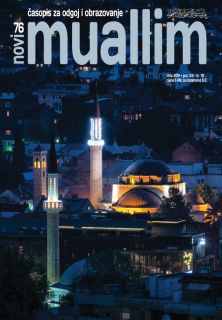REPRESENTATIVE MODELS OF ISLAMIC ARTS IN PLJEVLJE: THE MOSQUE AND THE WAQF OF HUSEIN PASHA BOLJANIĆ
DOI:
https://doi.org/10.26340/muallim.v19i76.1691Keywords:
Islamic arts, Husein pasha Boljanić, Husein-pasha’s mosque mimmar Hayreddin, PljevljeAbstract
UDK 061.27(497.16 pljevlja)”15”
As exceptionally influential person who held high ranking offices in Ottoman Porte, Husein paša Boljanić (?-1594.), born in the suburbs of Pljevlje has, by establishing his waqf initiated social, economic and cultural development of Pljevlje (Taslidže) in the 16th century. The central Pljevlje mosque, named after him, has a distinctive place in the Husein pasha’s waqf. It is listed among most representative mosques with a dome of the classical Ottoman period in Bosnia and Herzegovina. The representative character of its project, the harmony of proportions, lavish decoration of interior, and especially, very rare in the architecture of this period a characteristic detail of high tholobate (drum) that is holding the dome which is strengthened from the outer side by pilasters, and keeping in mind the significance and the ranking of Husein pasha – all lead to assertion that the architect who made the plan for this mosque was mimmar Hayreddin, who was also the architect of The Old Bridge in Mostar.
Downloads
Published
How to Cite
Issue
Section
License
Naknada:
a. Časopis ne naplaćuje naknadu za obradu članaka (APC) i naknadu za podnošenje članaka.
Autori koji objavljuju u ovom časopisu pristaju na sljedeće uvijete:
- Autori zadržavaju autorska prava i pružaju časopisu pravo prvog objavljivanja, pri čemu će rad jednu godinu po objavljivanju biti podložan licenci Creative Commons imenovanje koja omogućuje drugima da dijele rad uz uvijet navođenja autorstva i izvornog objavljivanja u ovom časopisu.
- Autori mogu izraditi zasebne, ugovorne aranžmane za ne-ekskluzivnu distribuciju rada objavljenog u časopisu (npr. postavljanje u institucionalni repozitorij ili objavljivanje u knjizi), uz navođenje da je rad izvorno objavljen u ovom časopisu.


